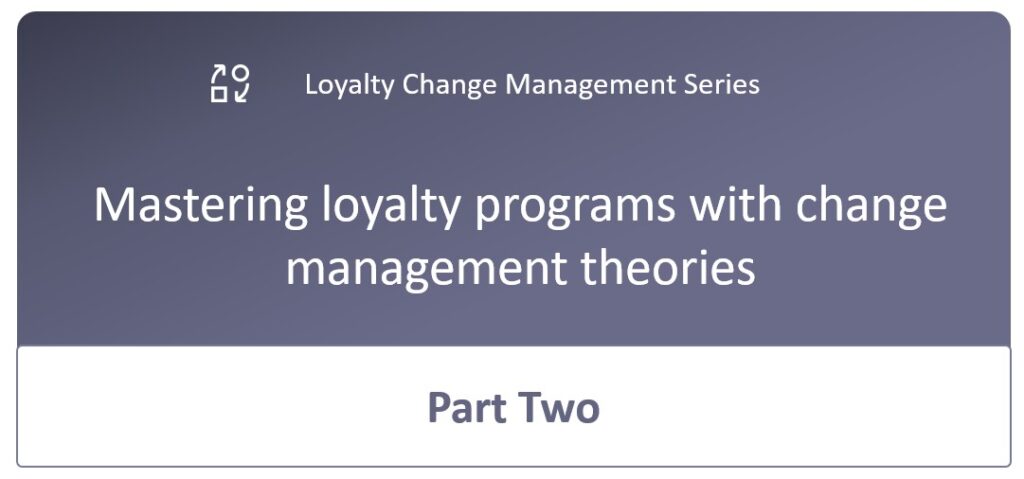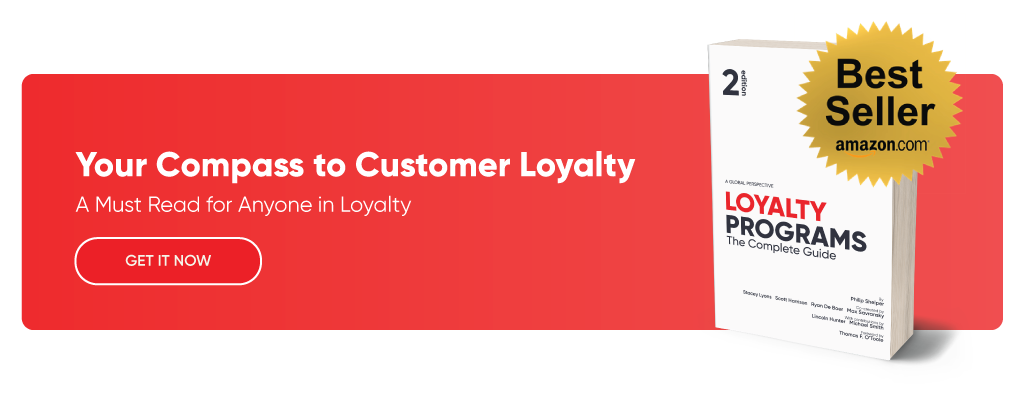
In a world where customer loyalty can make or break a business, organisations continuously seek new ways to engage and retain their clientele. Loyalty programs, designed to reward and retain customers, play a critical role in enhancing customer satisfaction and loyalty. However, implementing or revamping these programs often involves significant change within an organisation, making change management essential. By applying various change management theories, organisations can streamline the implementation of loyalty programs and ensure their long-term success.
Understanding change management theories
Change management is a structured approach that helps individuals, teams, and organisations transition from a current state to a desired future state. With projects varying in complexity, several change management models provide frameworks for navigating and implementing change effectively. It is important to understand these theories when implementing a change such as a loyalty program.
Below are a number of theories that can be applied to loyalty programs:
1. Lewin’s change management model
Kurt Lewin’s model is foundational, consisting of three phases: Unfreeze, Change (or Transition), and Refreeze. When applying this model to loyalty programs, the organisation must first challenge existing perceptions and create awareness of the necessity for change.
– Unfreeze: Prepare the organisation by communicating the need for a new or improved loyalty program. Break down existing processes and motivate employees to embrace the change.
– Change (or Transition): Implement changes by developing innovative loyalty initiatives that encourage customer retention. Support and guide employees as they adapt to new strategies and engage in new customer interactions.
– Refreeze: Solidify these initiatives by integrating them into everyday operations, ensuring they become part of the organisational culture. Monitor the outcomes and make necessary adjustments to maintain program effectiveness.
2. Prosci’s ADKAR model
The ADKAR model focuses on individual transitions within change processes. In loyalty programs, this model ensures employees understand their roles and are equipped to promote the program effectively.
– Awareness and desire: Communicate the program’s benefits to employees, fostering a desire to participate in its success. Highlight how a robust loyalty program can enhance customer satisfaction and drive business growth.
– Knowledge and ability: Provide training on program details and equip employees with the skills and tools needed to implement it. Support ongoing development to ensure employees execute their roles effectively.
– Reinforcement: Maintain momentum by recognising and rewarding the successful implementation of the program, ensuring its continued success.
3. Kotter’s 8-Step model
John Kotter’s model emphasises a strategic approach to change, suitable for large-scale projects like introducing a new loyalty program.
– Establish a sense of urgency and build a coalition: Motivate the organisation to understand the competitive advantage a sophisticated loyalty program can bring. Form a team to champion the initiative.
– Develop and communicate the vision: Create a compelling vision for the program, detailing how it will function and align with organisational goals. Continuous communication is crucial to keep everyone engaged.
– Empower and generate short-term wins: Empower employees to take ownership and remove obstacles that hinder progress. Recognising short-term successes boosts morale and drives continued effort.
– Consolidate gains and embed new approaches: Build on initial successes, adjusting strategies as needed and ensuring the program becomes ingrained in the organisational culture.
4. Nudge theory
Nudge theory emphasises small, subtle interventions to influence behaviour without restricting choices, ideal for loyalty programs aiming to drive customer and employee engagement.
– Design and implement nudges: Craft interventions that subtly incentivise customers to join and participate in the loyalty program. This could include personalised rewards or simplifying the sign-up process.
– Test and monitor: Conduct experiments to test the effectiveness of these nudges and refine strategies based on feedback, ensuring sustainable program success.
5. McKinsey 7-S framework
This model underscores the alignment of seven key organisational elements. For loyalty programs, it ensures alignment across strategy, structure, systems, shared values, style, staff, and skills.
– Align strategy and structure: Integrate the loyalty program’s objectives with the organisation’s strategy, ensuring structural support for seamless execution.
– Systems and shared values: Develop efficient processes for program management and foster a culture that values customer loyalty and engagement.
– Style, staff, and skills: Encourage leadership styles that motivate teams, hire, and train staff equipped to carry out program responsibilities, and ensure skills are aligned with program goals.
6. Kübler-Ross change curve
Originally developed to describe stages of grief, this model is adapted for change management, providing insights into emotional responses during transitions, including those involved in implementing new loyalty programs.
– Support through transition: Recognise and address the emotional cycles employees experience, from initial denial and resistance to eventual acceptance of the program changes.
– Provide continuous support: Offer training and emotional support to ease transitions, helping employees embrace and support the loyalty program.
Key takeaway
By applying change management theories, organisations can effectively implement loyalty programs that resonate with both employees and customers. This enhances customer retention, increases satisfaction, and ultimately drives business growth. While each model offers unique insights, a tailored approach combining elements from various theories can address specific challenges, ensuring that loyalty programs are not only launched successfully but also produce lasting value for the organisation. Mastering change management for loyalty programs is a critical strategy for ensuring growth and sustained customer loyalty.
In the next blog we will go through harnessing change management psychology in loyalty programs.
Blogs in the series:
- Understanding loyalty in the context of change
- Mastering loyalty programs with change management theories
- Harnessing change management psychology in loyalty programs
- Navigating loyalty transformations: The role of leadership and communication
- The key steps to seamlessly integrate a loyalty program
- Adapting to change in the future: Why microchange strategies are the future of business evolution
Sources:
Heim, I. and Sardar-Drenda, N. (2021), “Assessment of employees’ attitudes toward ongoing organizational transformations”, Journal of Organizational Change Management, Vol. 34 No. 2, pp. 327-349, available at: https://doi.org/10.1108/jocm-04-2019-0119
Lewin, K. (1958), “Group decision and social change/’ in Readings in Social Psychology, eds. E. E. Maccoby, T. M. Newcomb, and E. L. Hartley, Holt, Rineh
Van de Ven, a., & Poole, M. (1995) Explaining development and change in organisations. Academy of Management Review, 20, 510-540
Unknown. (2008) Enduring Ideas: The 7-S Framework, McKinsey Quarterly https://www.mckinsey.com/capabilities/strategy-and-corporate-finance/our-insights/enduring-ideas-the-7-s-framework
Unlock the full potential of your brand with our expert loyalty consulting services
Whether you’re looking to enhance customer engagement, boost retention, or create a world-class loyalty program, our team is here to help. Contact us today to start your journey towards building your own loyalty program strategy.

